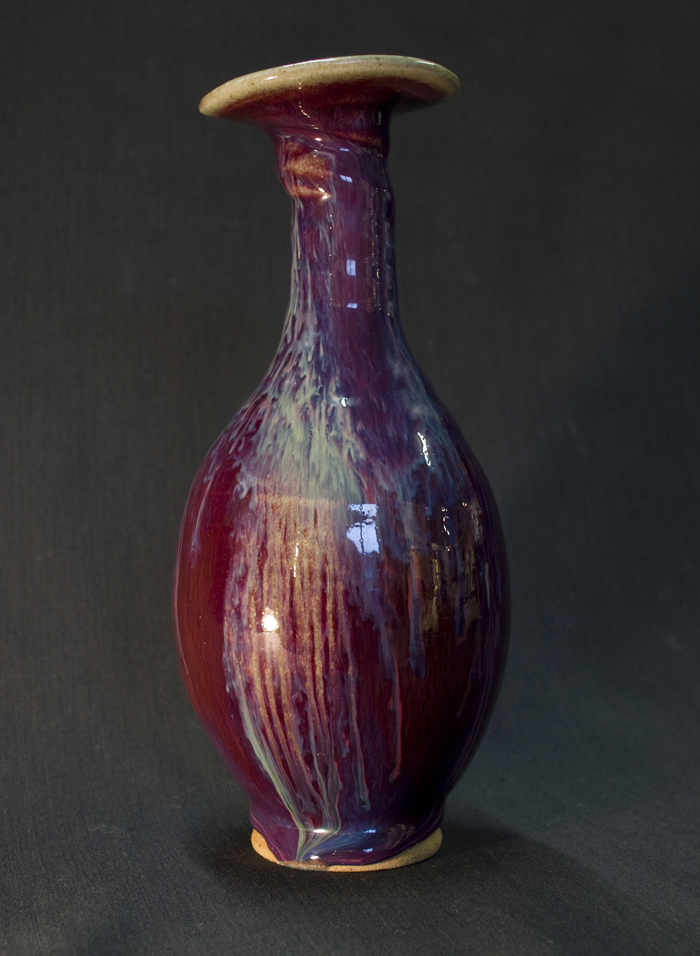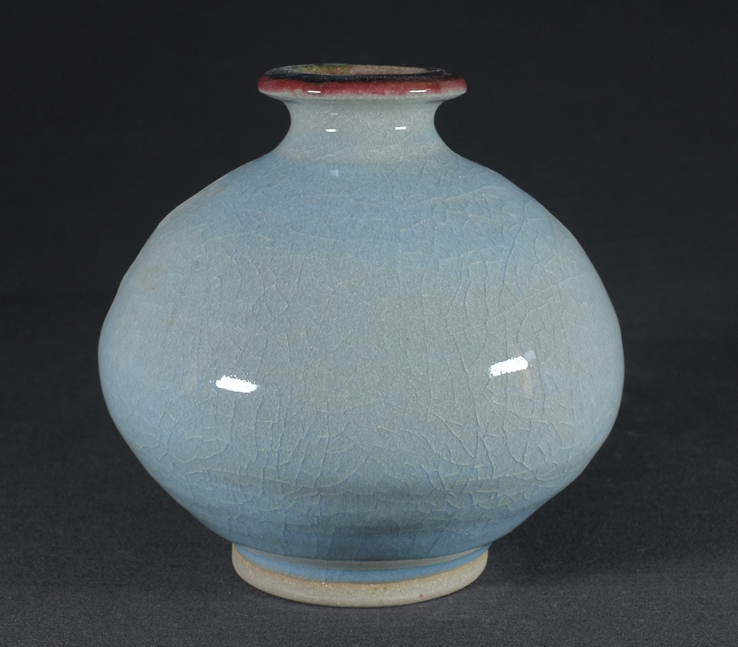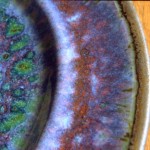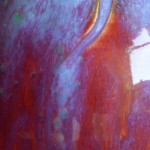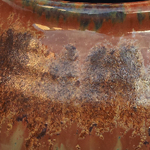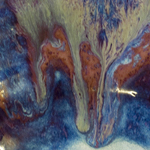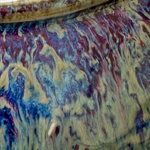Glazes
My work is inspired by the glazes and forms of the early ceramics from Japan, China and Korea. I have spent many years studying and working out recipes for the ancient glazes and have added my own intuition to increase their depth and beauty, achieving layers of colour within colour..
I have developed a ‘Lang-Yao’ or Flambé, a copper red glaze, an iron blue ‘Jun’, a green Celadon, and a Black ‘Tea Dust’ Tenmoku, Shino and Wood Ash glazes. My kiln 40 cu. ft. in size, I built myself, is of my own design, fired with a single natural gas burner. My firing technique is called ‘Reduction’ firing. This means that I reduce the amount of oxygen going into the kiln to burn the fuel, I also stoke a little wood into the kiln towards the end of the firing, to increase this effect. I usually overlay 4 or 5 different glaze mixes on each pot plus brushed on raw oxides in a manor that ensures every piece of my work comes out different, and this coupled with the reduction kiln firing; and the placing of the piece within the kiln – where every position in the kiln will give a different result, even if the glaze combination was identical.
The Chinese call the iron blue jun glaze ‘Sky After Rain’
All my glazes contain a proportion of wood-ash ; this is the ash left over from the burning of hedge cuttings from a local Farm, and also from the burning of old (un-reusable) pallets on my home fire in Winter. One of my favourite wood ashes is from Wild Rose and Hawthorn . Wood Ashes provide many intimate elements that one cant get otherwise from standard glaze materials, most importantly phosphorous combined with Calcium. See the ‘oriental mystery‘ page for some glaze recipes .
I have evolved my glaze recipes over a long period of time to arrive at the work you see today; however I continue my experiments to achieve more and new exciting colours and qualities. Some of the glazes have a crackle pattern within the glaze structure, as much loved by collectors of Japanese and Chinese ceramics. The crackle effect can slowly develop over a number of years adding to the beauty of the piece, and it can be deliberately emphasised buy rubbing in a pigment, as the Chinese often did, or it can be just left to let time take its course and ‘mature’ the pot. The crackle dose not in any way affect the use or structure of the pot, as they are fully vitrified at very high temperatures that makes them non porous and fully usable if wished.
My glazes have in them a high percentage of Silica being fired at high stoneware temperatures. The principle fluxing element in my glazes is Calcium combined with smaller amounts of Potassium, Sodium and Magnesium. The colours of my glazes come from very small amounts of copper and iron in the glaze mix or brushed underneath a Jun glaze – reduced copper turns red and iron blue/green. On some pieces I brush on the tops a thick layer of iron oxide, this melts runs and crystallises into gold(iron pyrites) Also brushing a coat of neat wood ash on the tops of pots runs and gives an interferance pattern to the underlying glazes. The result of using a single gas burner gives an uneven reduction within the kiln therefore I have some pieces reduced on one side and oxidized on the other, giving the unique flame marks. The firing takes about 24 hours to reach it’s top temperature of approx. 1380°C. cone 14. The kiln is then shut off and allowed to cool slowly for 48 hours before opening. On cooling the maturing process is still ongoing, oxidized crystals form within the glaze matrix and can give occasionally the rare effect of blue and green crystals in a rich copper red glaze.
GLAZE CLOSE UPS
View this page for some best examples of previous work . and this page for new work. .
See an article from Ceramic Review about my search to reproduce Chinese Jun glazes.
The Inglewood Jar – Like on Facebook

